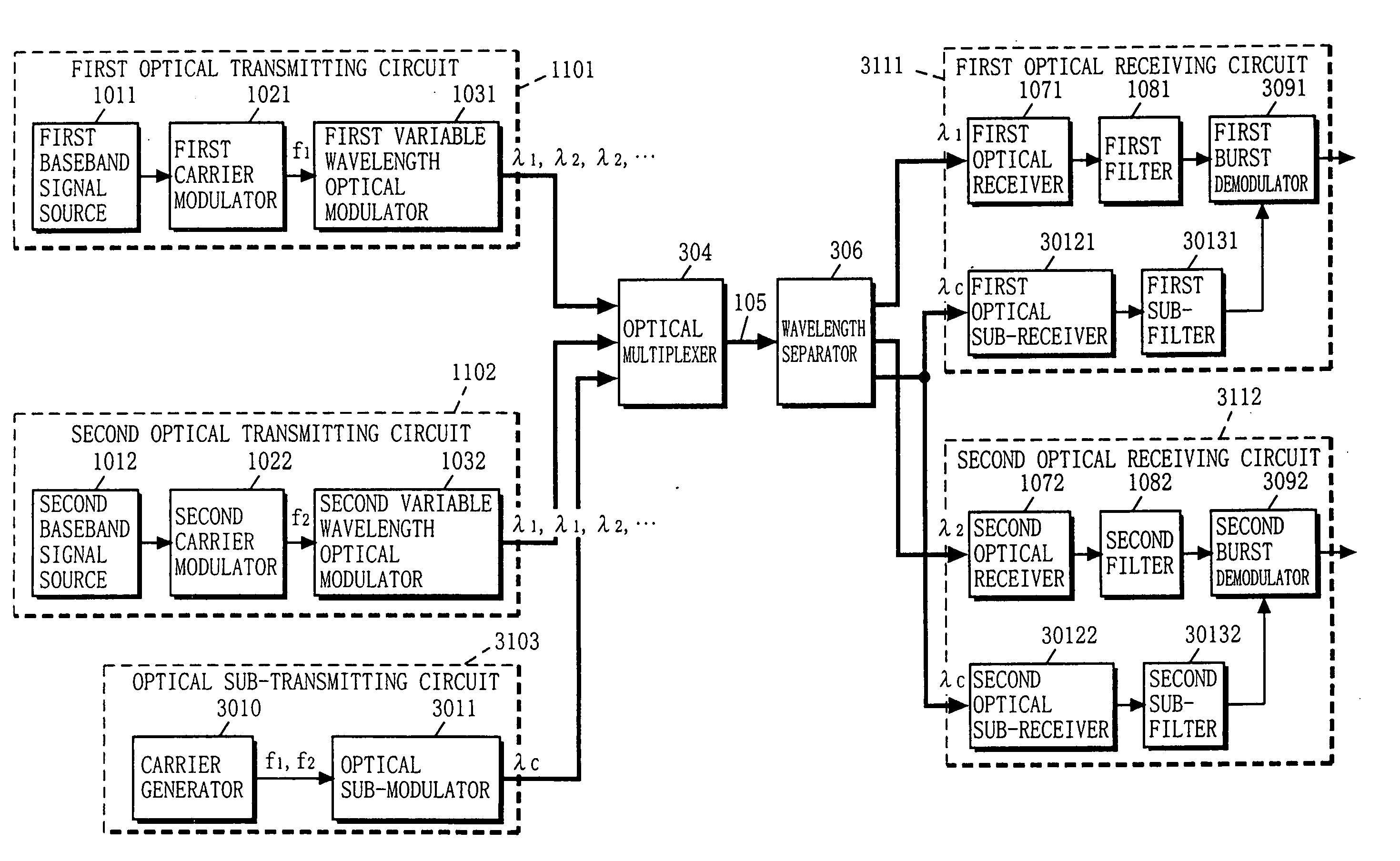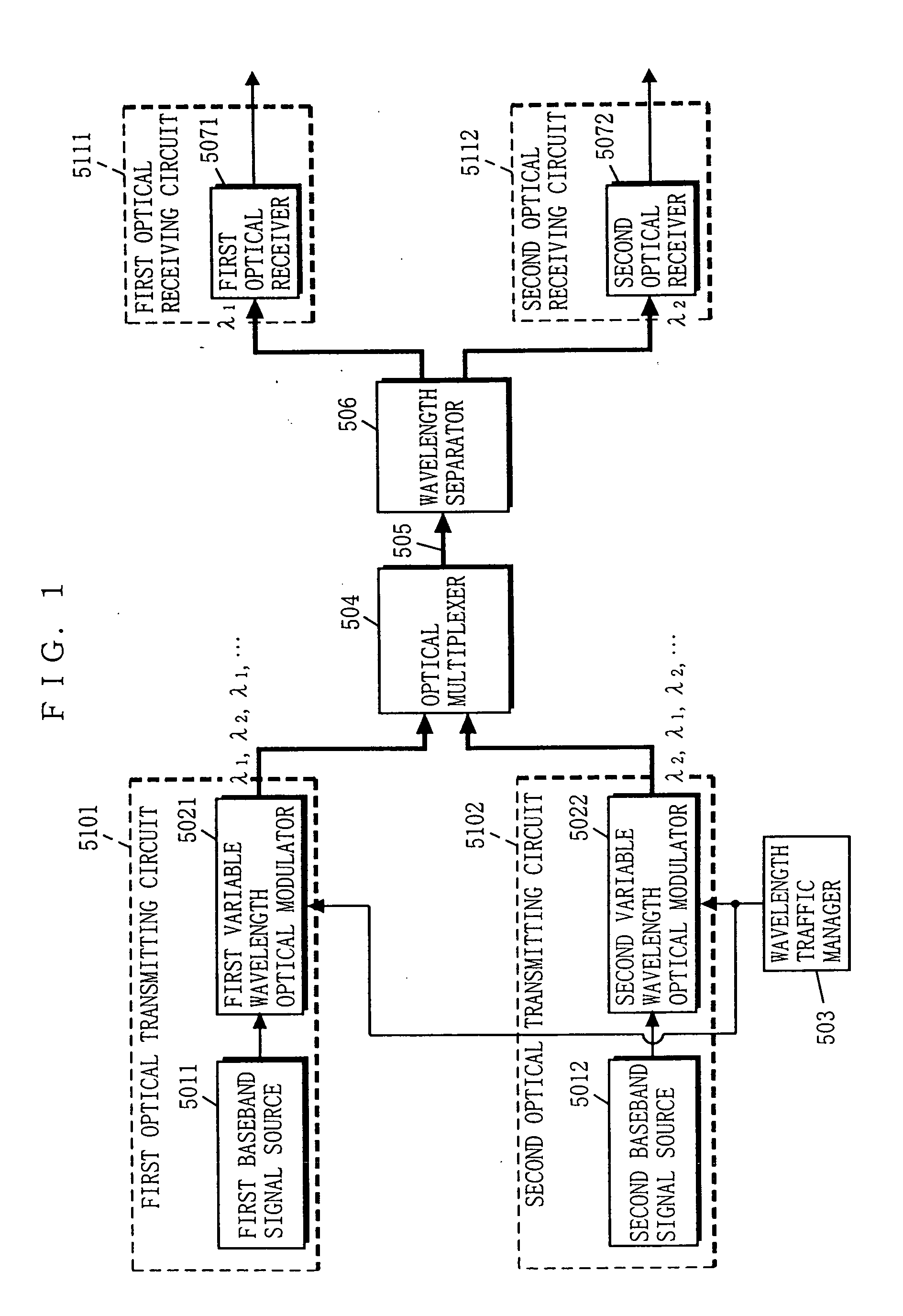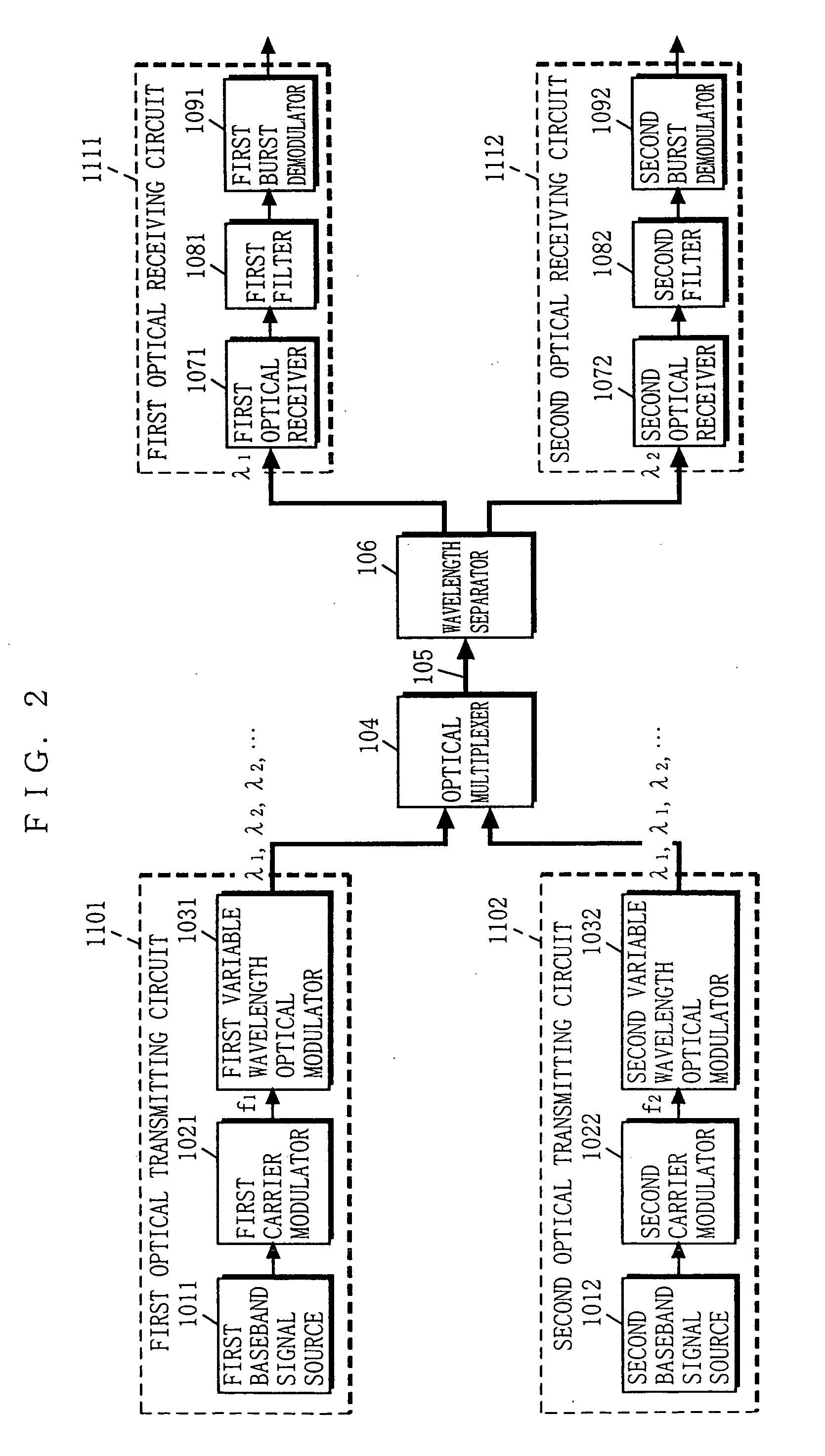Burst optical communication apparatus
a technology of optical communication and burst signal, which is applied in the field of optical communication apparatus for transmitting burst signal, can solve the problems of inability to achieve signal transmission and inability to detect optical signals, and achieve the effect of preventing collision
- Summary
- Abstract
- Description
- Claims
- Application Information
AI Technical Summary
Benefits of technology
Problems solved by technology
Method used
Image
Examples
first embodiment
[0061]FIG. 1 is a block diagram showing the structure of an optical communication apparatus according to a first embodiment of the present invention. In FIG. 1, the optical communication apparatus includes first and second optical transmitting circuits 5101 and 5102, and the first and second optical receiving circuits 5111 and 5112. Such a structure allows the optical communication apparatus to achieve bidirectional burst (intermittent) transmission between the first and second optical transmitting circuits 5101 and 5102 and the first and second optical receiving circuits 5111 and 5112. Note that, in FIG. 1, components that are identical in structure to those described with reference to FIG. 8 are provided with the same reference numerals.
[0062] The optical communication apparatus of the first embodiment further includes a wavelength traffic manager 503 for managing the wavelengths of optical signals respectively outputted from first and second variable wavelength optical modulator...
second embodiment
[0070] An optical communication apparatus according to a second embodiment of the present invention is the one that solves problems of the optical communication apparatus according to the first embodiment, which are now described first.
[0071] The optical communication apparatus according to the first embodiment uses a baseband digital signal as the transmission signal. Therefore, if optical signals from a plurality of optical transmitting circuits are simultaneously provided to a single optical receiving circuit, a collision occurs among the transmission signals, and therefore, these optical signals cannot be detected. To solve this problem, as stated above, the burst optical signals outputted from the optical transmitting circuits are managed so as not to be simultaneously identical in wavelength, that is, to always differ in wavelength from each other. However, this management makes the system structure complicated. Moreover, if the optical transmitting circuits are placed apart ...
third embodiment
[0102] With reference to FIG. 4, the structure of an optical communication apparatus according to a third embodiment of the present invention will now be described. In FIG. 4, the optical communication apparatus of the third embodiment includes the first and second optical transmitting circuits 1101 and 1102, an optical sub-transmitter circuit 3103, and first and second optical receiving circuits 3111 and 3112. Note that, in FIG. 4, components that are identical in structure to those described with reference to FIG. 2 are provided with the same reference numerals.
[0103] The optical communication apparatus of the third embodiment further includes an optical multiplexer 304 for multiplexing lights outputted from the first and second optical transmitting circuits 1101 and 1102 and the optical sub-transmitter circuit 3103, the optical transmission line 105 for transmitting the multiplexed light, and a wavelength separator 306 for separating the light from the optical transmission line ...
PUM
 Login to View More
Login to View More Abstract
Description
Claims
Application Information
 Login to View More
Login to View More - R&D
- Intellectual Property
- Life Sciences
- Materials
- Tech Scout
- Unparalleled Data Quality
- Higher Quality Content
- 60% Fewer Hallucinations
Browse by: Latest US Patents, China's latest patents, Technical Efficacy Thesaurus, Application Domain, Technology Topic, Popular Technical Reports.
© 2025 PatSnap. All rights reserved.Legal|Privacy policy|Modern Slavery Act Transparency Statement|Sitemap|About US| Contact US: help@patsnap.com



